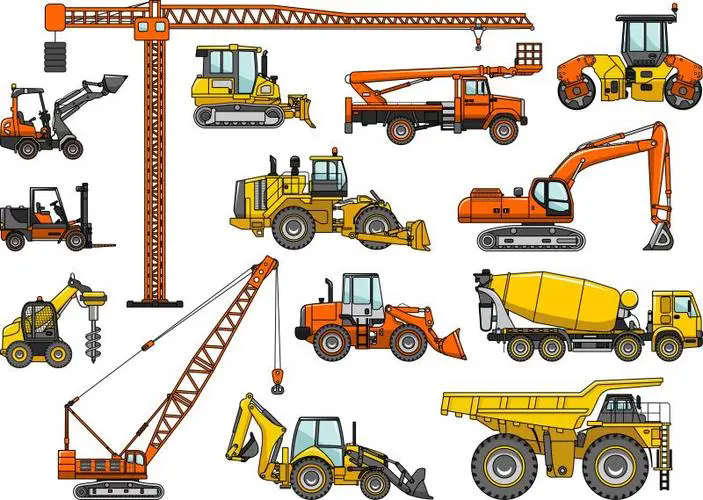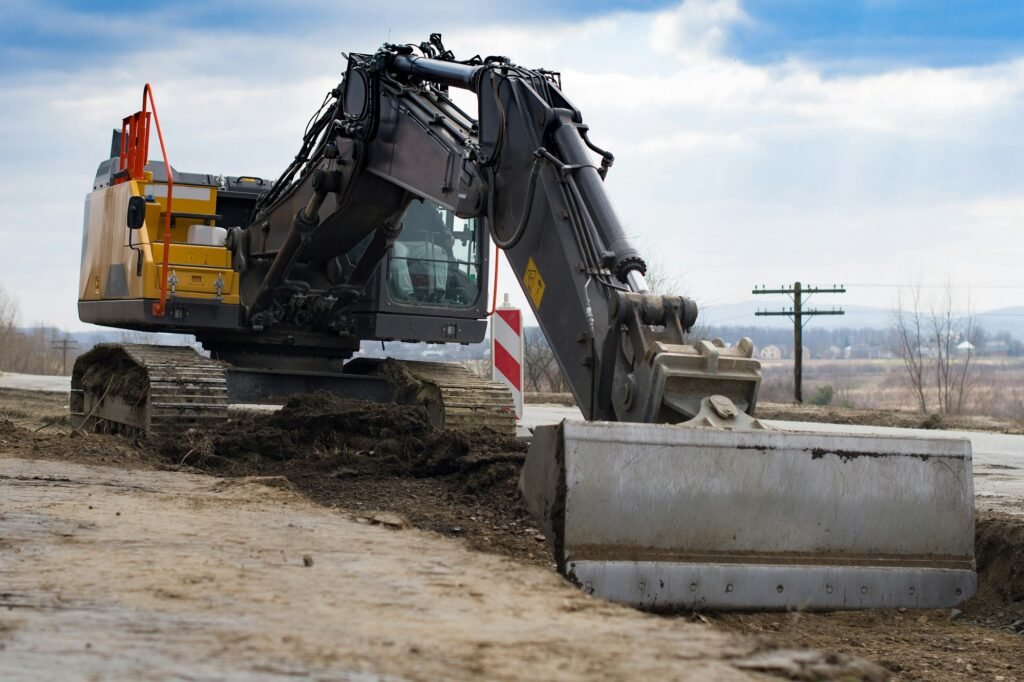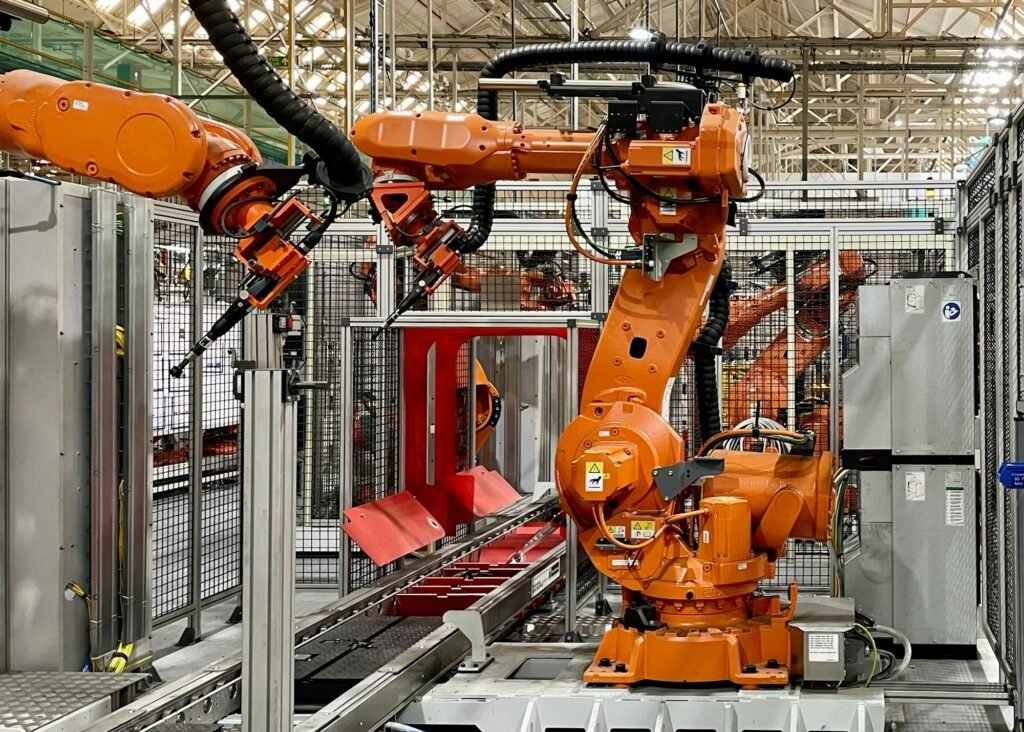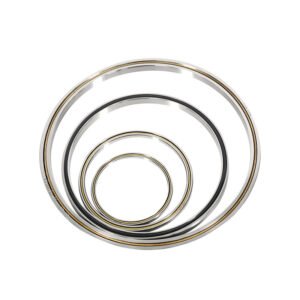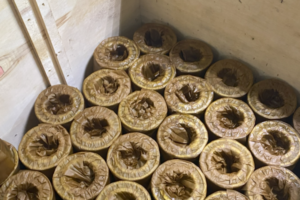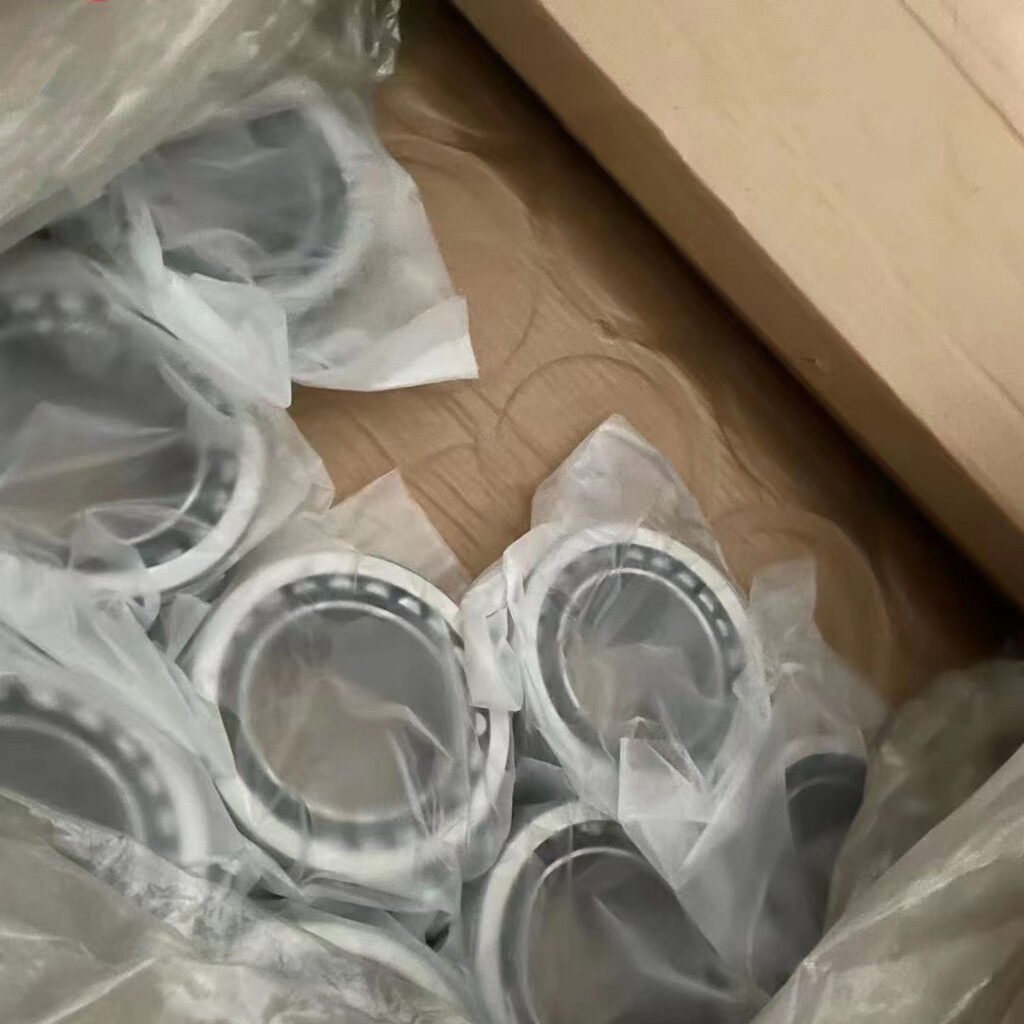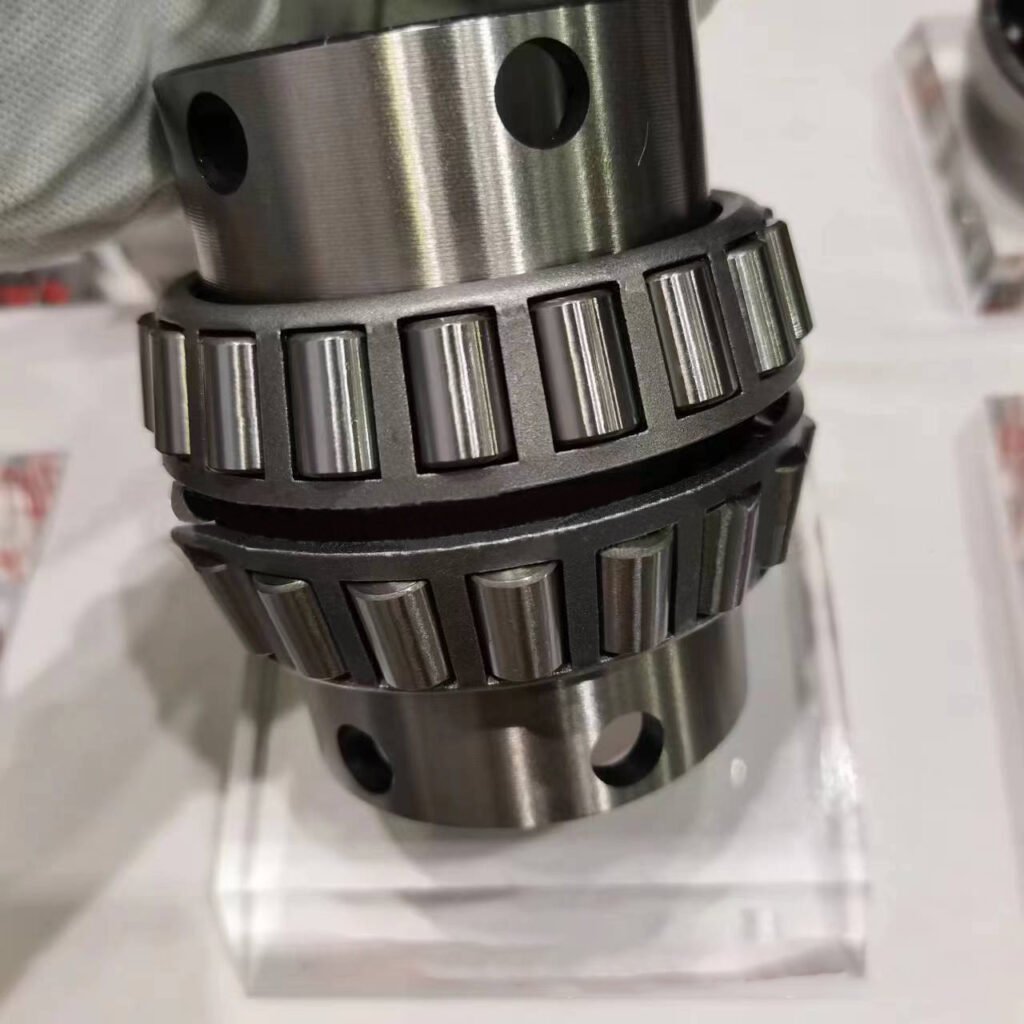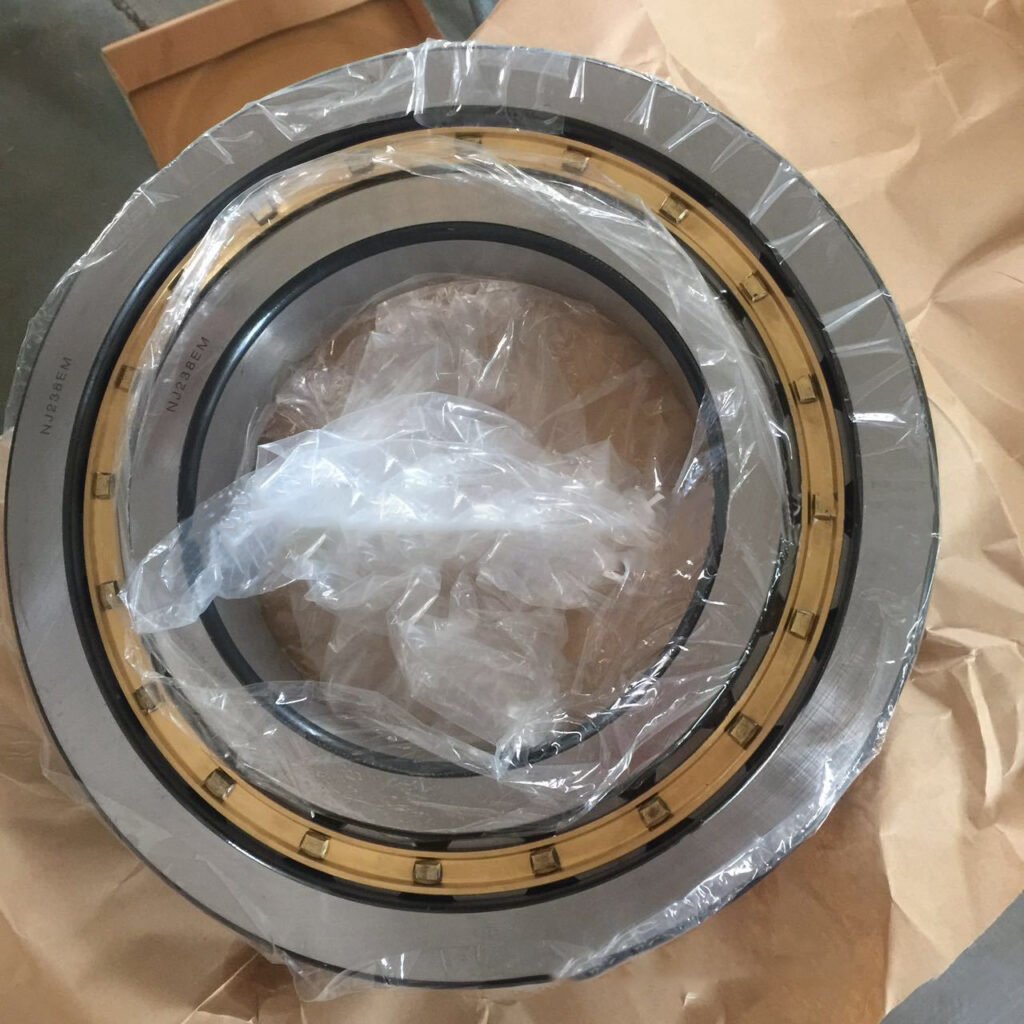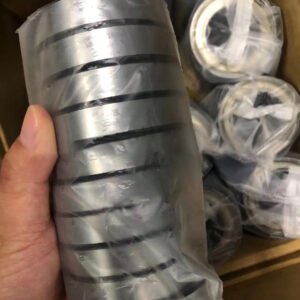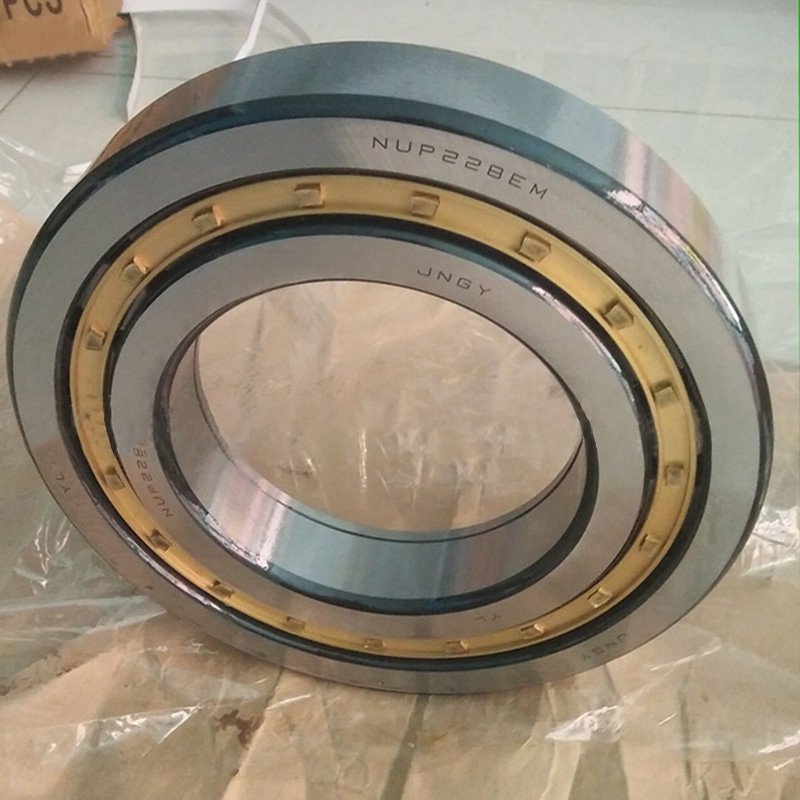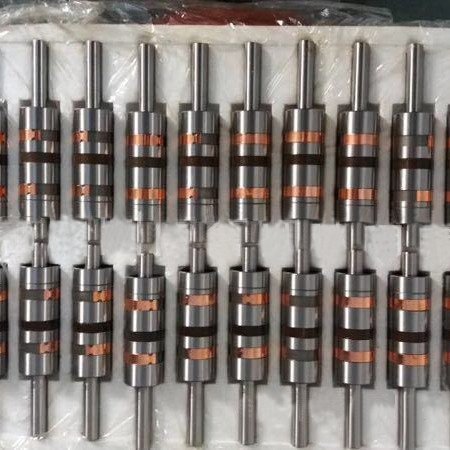Thin-walled angular contact ball bearings have the advantages of compact structure, light weight, strong load-bearing capacity, and high precision. They are widely used in precision instruments, robots, medical equipment and other fields. However, after long-term use, thin-walled angular contact ball bearings may fail, which means that the bearings can no longer be used. So what are the common failure forms? How to find the cause of failure? This article will explain in detail, please read carefully.
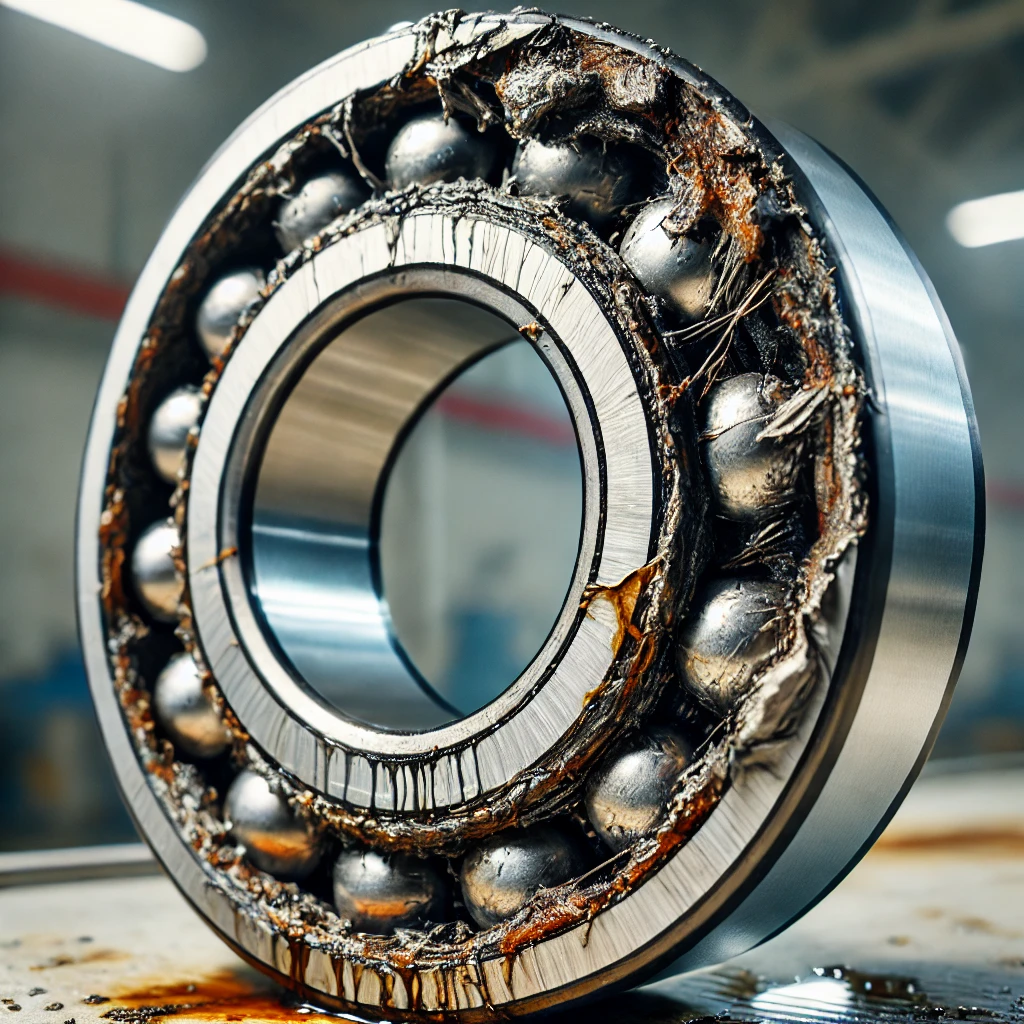
Here is an image depicting the failure of a thin-walled angular contact ball bearing, showing spalling, corrosion, and discoloration due to thermal damage.
1. Fatigue Failure
What Happens: Over time, the repeated load cycles on the bearing material cause microscopic cracks. These cracks grow, leading to pieces of the raceway or rolling elements breaking off (spalling).
Why It Happens:
Bearings are subjected to higher loads than they are designed for, often because of unexpected operating conditions.
Lack of proper lubrication means there isn’t enough oil film to separate the metal surfaces, which increases stress.
Dirt or contaminants in the lubricant cause localized stress points, accelerating fatigue.
2. Wear and Abrasion
What Happens: Material on the surfaces of the raceway and rolling elements gradually wears away, leading to reduced precision and increased operational clearance.
Why It Happens:
The lubricant may not be enough or might degrade, resulting in direct metal-to-metal contact.
Contaminants like dust, grit, or metal particles enter the bearing and act like abrasives.
If the bearing or shaft is misaligned, it creates uneven contact and accelerates wear.
3. Corrosion Failure
What Happens: Rust or pitting appears on the bearing surfaces, affecting smooth operation and reducing strength. Corroded bearings are prone to premature wear or even cracking.
Why It Happens:
Bearings are exposed to moisture, water, or chemicals due to poor sealing or environmental conditions.
Improper storage, such as keeping bearings in damp environments, can cause rust before they are even installed.
Corrosion inhibitors in the lubricant may break down over time or be insufficient.
4. Thermal Damage
What Happens: Excessive heat causes discoloration or softening of the bearing material. Lubricants may burn or degrade, and parts may deform or seize.
Why It Happens:
The bearing operates at speeds higher than its design capacity, generating heat.
Insufficient or low-quality lubricant fails to dissipate heat effectively.
Incorrect installation can lead to uneven loading, which creates heat hotspots.
5. Fretting Wear
What Happens: Tiny movements between the bearing and its housing or shaft cause wear and material loss. This creates a reddish or black powder at the contact points.
Why It Happens:
Loose fits between the bearing and its mounting surfaces allow micro-movements.
Vibration during operation or transportation causes repetitive small movements.
Lack of lubrication at the contact areas worsens fretting wear.
6. Brinelling and False Brinelling
What Happens: Permanent indentations (brinelling) form on the raceway from high loads, while shallow wear patterns (false brinelling) occur due to vibration when the bearing is stationary.
Why It Happens:
Heavy loads during assembly or improper handling create brinelling.
Bearings are exposed to vibration without rotation, often during transportation or in standby equipment.
Poor packaging or storage fails to prevent vibration or load impacts.
7. Fracture and Cracking
What Happens: Cracks form in the raceway or rolling elements. In severe cases, pieces may break off, leading to catastrophic failure.
Why It Happens:
Bearings are subjected to sudden impacts, such as during installation with a hammer.
Overloading or uneven stress distribution causes the material to exceed its strength limits.
Material defects or improper heat treatment during manufacturing reduce the bearing’s ability to handle stress.
8. Creep
What Happens: The bearing’s inner or outer ring slips slightly on the shaft or in the housing. This disrupts performance and often leaves a shiny or worn surface on the mounting area.
Why It Happens:
A loose fit between the bearing and its mounting surfaces allows movement under load.
Insufficient preload or clamping force fails to secure the bearing in place.
Operating conditions like vibrations or temperature changes cause expansion and contraction, loosening the fit.
Conclusion
Understanding the failure modes of thin-walled angular contact ball bearings—such as fatigue, wear, corrosion, thermal damage, and others—reveals that most issues arise from improper loading, inadequate lubrication, contamination, or poor installation practices. By addressing these root causes through proactive maintenance, precise installation, and high-quality lubrication, operators can significantly enhance bearing reliability and lifespan. A focused approach to identifying and mitigating these risks ensures optimal performance and minimizes costly downtime.

